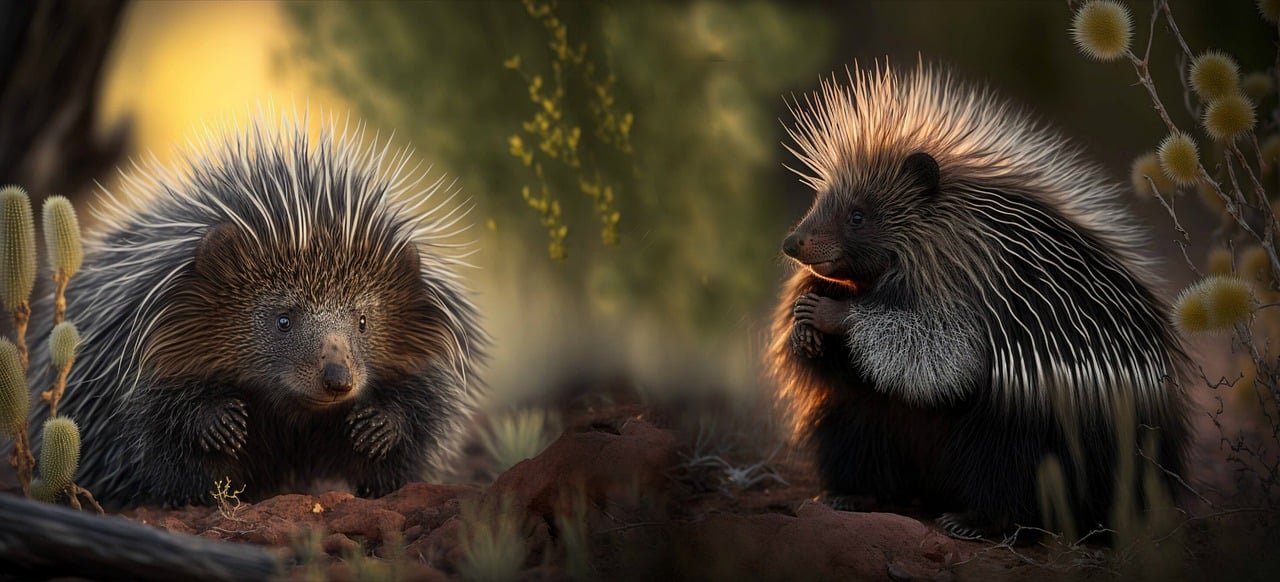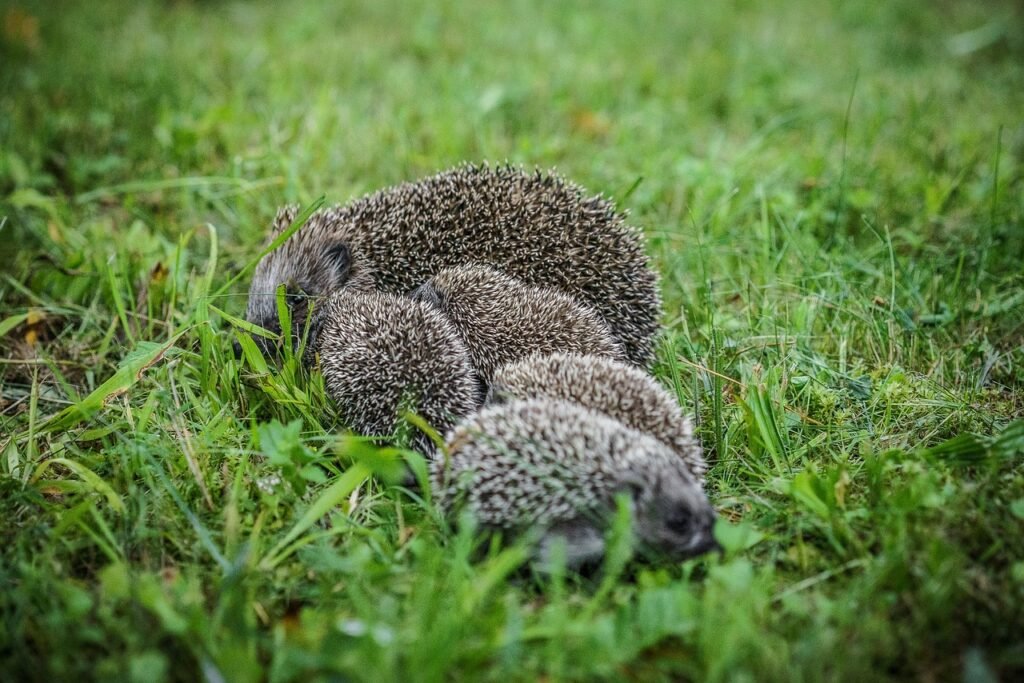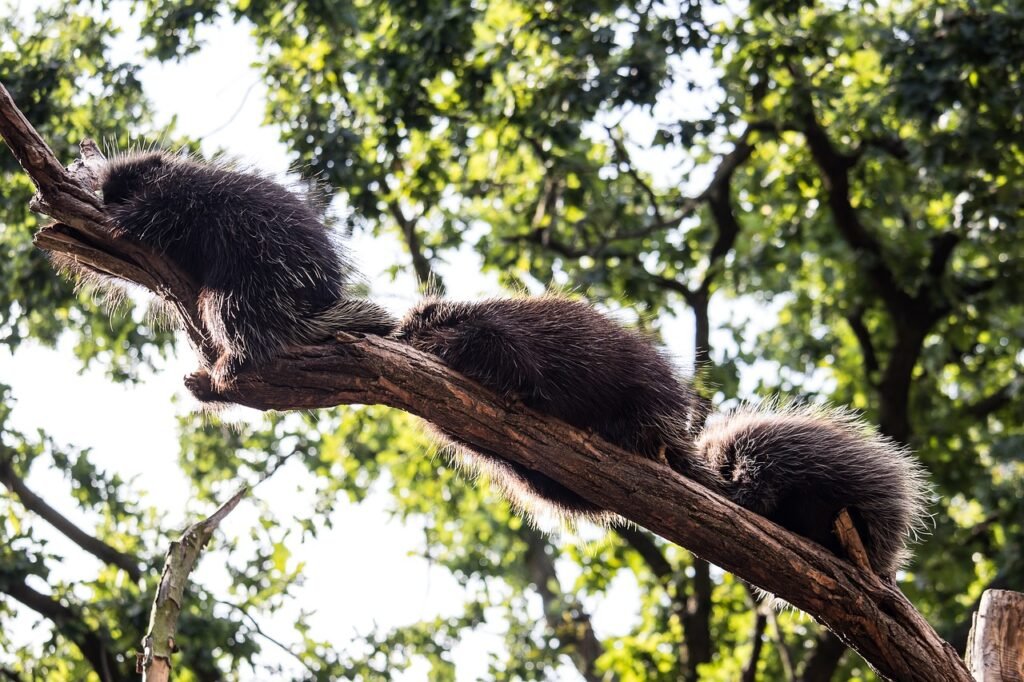The world of porcupines is not only characterized by their endearing quills but also by the intricate and fascinating process of reproduction. From courtship rituals to the arrival of adorable porcupine pups, understanding the nuances of porcupine reproduction provides insights into the natural behaviors and cycles of these unique creatures.
Courtship Rituals:
1. Scent Marking:
- Porcupines engage in scent marking as part of their courtship rituals. Scent glands located on various parts of their bodies play a crucial role in communication, especially during the breeding season.
2. Vocalizations:
- Vocalizations become more pronounced during courtship. Porcupines may emit a variety of sounds, including grunts, whines, and whimpers, to communicate their readiness for mating.
3. Gentle Physical Interactions:
- Courtship involves gentle physical interactions, such as nuzzling and mutual grooming. These behaviors strengthen the bond between potential mates.
Mating Behavior:
1. Breeding Seasons:
- Porcupines exhibit specific breeding seasons influenced by environmental factors. The timing of these seasons varies among species, with some experiencing peaks in mating activity during specific months.
2. Mating Process:
- The mating process involves copulation, during which a receptive female allows a male to approach and mate. Successful mating is a crucial step in the continuation of the porcupine life cycle.
3. Post-Mating Behavior:
- After successful mating, porcupines may exhibit changes in behavior, including increased nesting activity by pregnant females as they prepare for the upcoming birth.
Pregnancy and Gestation:
1. Gestation Period:
- The gestation period for porcupines varies among species but generally lasts several months. During this time, the female carries and nurtures the developing porcupine pups.
2. Signs of Pregnancy:
- Observing signs of pregnancy in porcupines includes changes in behavior, appetite, and physical appearance. Close monitoring is essential for caregivers to provide appropriate care.
3. Nesting Behavior:
- Pregnant porcupines exhibit nesting behavior as they create a comfortable space for giving birth. This instinctive behavior ensures a safe and secure environment for the upcoming arrival of porcupine offspring.
Birth and Early Care:
1. Litter Size:
- Porcupines typically give birth to one or two offspring per pregnancy. The size of the litter varies among species, and caregivers may observe the birth of tiny, quilled pups.
2. Birthing Process:
- The birthing process involves the delivery of porcupine pups covered in soft quills. The mother provides care and protection to her offspring during the vulnerable early stages of life.
3. Maternal Care:
- Porcupine mothers are known for their attentive and protective care. They nurse and nurture their quilled pups, ensuring their well-being during the initial stages of development.
Weaning and Independence:
1. Weaning Process:
- Weaning marks the transition from milk to solid foods for porcupine offspring. Caregivers play a role in providing a balanced diet and supporting the nutritional needs of the growing quilled juveniles.
2. Developmental Stages:
- Porcupine offspring go through various developmental stages, from infancy to playful juveniles. Each stage involves unique behaviors and milestones that contribute to their overall growth.
3. Encouraging Independence:
- As porcupine offspring grow, encouraging their independence becomes a natural part of the caregiving process. Providing a safe and stimulating environment supports their exploration and development.
Parental Bond and Family Dynamics:
1. Strong Parental Bonds:
- Porcupine parents form strong bonds with their offspring. Observing these bonds enhances our understanding of the intricate family dynamics within the porcupine community.
2. Siblings and Socialization:
- Porcupine siblings engage in social interactions, play, and exploration together. Understanding their social dynamics enriches our appreciation for porcupine family life.
Conclusion:
Love and quills intertwine in the captivating journey of porcupine reproduction. From the enchanting courtship rituals to the nurturing care provided by porcupine mothers, each stage of the reproductive process contributes to the wonder of life within the porcupine community. As we delve into the complexities of porcupine reproduction, we gain a deeper appreciation for these unique creatures and their remarkable ability to perpetuate their species with love and resilience.



